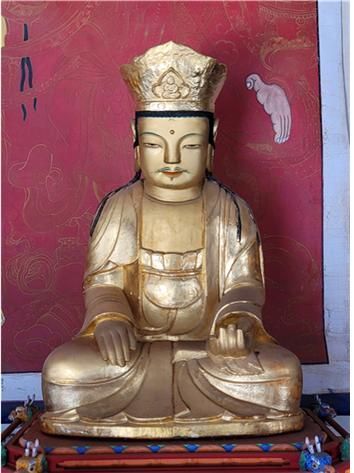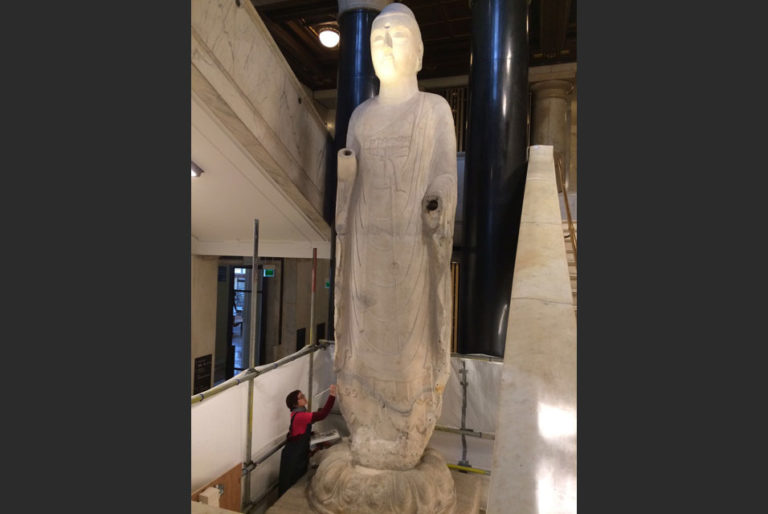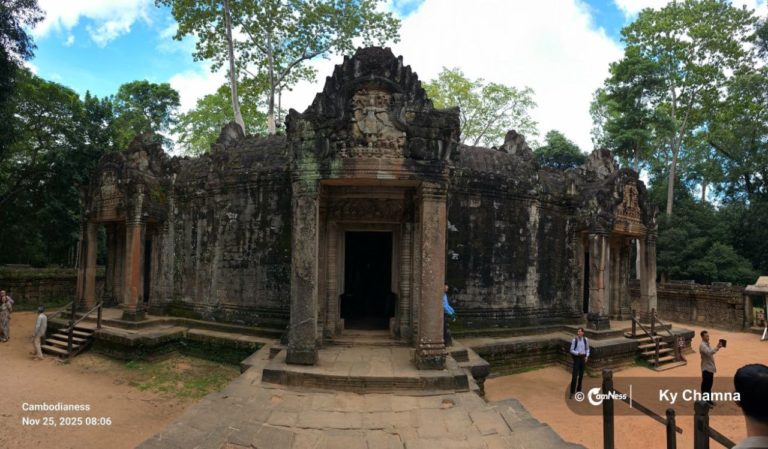
Twenty-three years ago, the Taliban destroyed two large Buddha statues in Bamyan province. The taller statue, named Salsaal, standing at 53 meters, and the smaller one, Shahmama, at 35 meters, were carved into the mountains between the 3rd and 7th centuries AD with a distinctive style. Mullah Omar, the former Taliban supreme leader, ordered the destruction of these statues on February 26, 2001, and the group blew them up from March 9 to 11 of the same year. Simultaneously, under Mullah Omar’s orders, sculptures and artifacts from the Buddhist era in various parts of Afghanistan, including hundreds of ancient artifacts in the National Museum of Afghanistan, were also destroyed.
In the twenty years since the fall of the previous Taliban regime, significant efforts have been made by previous governments, cultural organizations, and national and international organizations to preserve the remnants of the historical sites in Bamyan. Over the past two decades, various cultural programs, including “A Night with Buddha,” have been held in Bamyan province. The organizers of these programs described their goal as attracting more attention from the world to restore historical sites and better protection of historical artifacts remaining in Bamyan.
In the past two years, during which the Taliban has once again gained control over Afghanistan, some cultural activists and residents of Bamyan have criticized vandalism, destruction, and unauthorized excavations in the historical sites of Bamyan by the Taliban. According to them, these acts of vandalism are carried out by Taliban fighters.
These cultural activists and residents of Bamyan emphasize that if the situation continues in this manner, all historical remnants of Bamyan will be destroyed, and valuable historical heritage will once again be plundered by the Taliban.
Arif (pseudonym), one of the residents of Bamyan, says, “Over the past two years, the Taliban not only failed to preserve historical sites but also engaged in vandalism in most historical areas of Bamyan.”
This Bamyan resident alleges that Abdullah Sarhadi, the Taliban governor in Bamyan, is leading unauthorized excavations in historical sites of the province. He states that during the destruction of the two large Buddha statues, Abdullah Sarhadi was the then commander of the Taliban’s Red Brigade in Bamyan. According to him, these statues were destroyed by this Taliban official.
Arif claims that the portico of the historical site above the clay sculptures was vandalized over 25 days by 20 workers, resulting in irreparable damage to the artifacts, and the artifacts found there are plundered.
One of the employees of the Historical Sites Protection Department in Bamyan, who prefers to remain anonymous in the report, says, “Unfortunately, reports have been received of armed individuals vandalizing various sites in Bamyan, especially historical sites in districts such as Yakawlang No. 1, Yakawlang No. 2, Panjab, Shibar, and Kahmard.”
This department employee adds that they have raised this issue with the Taliban’s leader in this institution and the governor’s office of this group, but no action has been taken by them so far.
Mohammad Aslam, one of the residents of Yakawlang District in Bamyan, also states that historical sites in the Forty Towers and Kelagan area, two important historical sites in Yakawlang No. 2 District, and the historical site and shrine of Deh Surkh in Yakawlang No. 1 District of this province have been vandalized by unknown individuals.
The resident of Yakawlang District emphasizes that some locals have expressed concerns about vandalism and excavation of historical sites by unidentified gunmen to Taliban authorities. Still, no action has been taken by the group so far.
These concerns arise due to reports of vandalism at various sites in Bamyan, such as Kerman-e Panjeb, Forty Towers in Yakawlang, the shrine of Deh Surkh, historical sites in Kahmard, Shahr-e Gholghola, and the caves at the entrance of the Foladi Valley in central Bamyan, which have emerged this spring. The Taliban have stationed their fighters as guards at all these locations.
It is worth mentioning that Abdullah Sarhadi, the Taliban governor in Bamyan, who had a direct role in the destruction of the Buddhas of Bamyan, considers Mullah Omar’s order to destroy the Buddha statues as a “good decision.”
On the 23rd anniversary of the destruction of the Buddhas in Bamyan, the Taliban organized an event to honor Afghanistan’s historical artifacts. The Taliban’s acting minister of information and culture praised Afghanistan’s historical artifacts as “unique,” while omitting any reference to the destruction of the Buddha statues.



